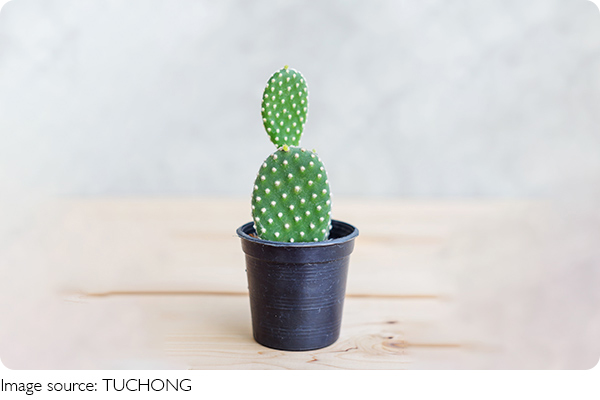Cactus Spine Secrets

Why on earth do these plants grow so many crazy-looking spines?
Some are long and twisty, others short and fuzzy—and they're everywhere. Today, we're going to uncover the secrets behind cactus spines, and trust us, they're way more than just pointy decorations.

Adapting to harsh environments
Cactus spines are all about survival. We might see them as just sharp little things, but in the wild, they're lifesavers—literally. Most cacti live in places that are extremely dry, with barely any rain. It might not rain for months! In these tough spots, the spines help by reducing the plant's surface area. Less surface area means less water escapes through evaporation.
Unlike big leafy plants that lose water quickly, cacti have slimmed down and armored up. Their spines also protect them from hungry animals. Imagine being a thirsty desert animal and spotting a juicy cactus—tempting, right? But those sharp spines are a clear “don't touch” warning. They stop animals from taking a bite, which keeps the cactus safe and growing.
Spines also act like natural sunshades. During the hottest parts of the day, they give the plant a bit of shade, keeping it cooler inside. Some even break up strong desert winds, preventing the plant from being damaged or blown over. Pretty smart, right?
Helping with identification
If you've ever seen a cactus collection, you'll know how different the spines can look. Some are thick and clumped together, others are thin and barely visible. That's no accident—it's one way botanists tell cactus species apart.
Take the Ferocactus, for example. It's famous for its thick, tough spines that grow in clusters. Meanwhile, the Astrophytum type barely has any spines at all—some are completely smooth!
Other spines are like little works of art—curved, flat, hooked, even striped with color. Some are red, yellow, or white, and their color can help with plant ID too. Botanists (and cactus lovers like us!) use spine shapes, colors, and patterns to figure out exactly what kind of cactus they're looking at.

Why spines are also beautiful?
Let's be real—part of why we love cacti is how cool they look. Spines give each cactus a one-of-a-kind vibe. Some are short and packed tightly, while others stretch out gracefully like long eyelashes.
They add texture and personality, turning a simple green plant into a sculptural showpiece. In gardens or on windowsills, spiny cacti grab attention and bring character to any space. And get this—some spines actually change with the seasons! They may shift color or texture, adding even more variety to the plant's look.
Storage with a twist
This might surprise you—some spines can store water. That's right. Certain cacti have adapted their spines to have hollow centers or sponge-like textures inside. These can hold small amounts of water, helping the plant stay hydrated during long dry spells.
The Cephalocereus senilis, also called the "Old Man Cactus," has long white spines that do double duty. They reflect sunlight, reduce water loss, and store a bit of moisture too. Same with the popular Golden Barrel Cactus—its fluffy spines hide water-absorbing tissues underneath.
They carry powerful meaning
Spines don't just protect plants—they've inspired people for centuries. In many cultures, spiky plants are seen as symbols of strength, resilience, and protection. They remind us to stand tall in tough times and protect what's important.
Some traditions even plant cacti around homes or sacred spaces to ward off bad energy. Beyond that, artists and poets have been fascinated by these plants for generations, drawing inspiration from their forms and meanings in paintings, music, and stories.
Blocking out the heat
Desert heat can be brutal, but cactus spines have a cool trick: they reflect sunlight. Depending on their angle and color, spines can bounce back harsh rays and reduce the amount of heat the cactus absorbs.
By reflecting sunlight and limiting water loss, spines help cacti survive scorching temperatures and intense UV radiation, especially at high altitudes where the sun hits harder. It's like having built-in sunscreen!

Final thoughts, Lykkers
So next time you admire a cactus, take a closer look at those spines. They're not just sharp points—they're tiny superheroes doing everything from water-saving to warding off hungry animals, and even helping the cactus look beautiful.
Whether you're a plant lover, a curious gardener, or just someone who likes a bit of desert flair, there's always something new to discover in the world of cacti. Which cactus has your favorite spines? Let us know—we're all ears (and spines)!
-
 Barrio Bliss in MadridHungry for heritage? Uncover Madrid’s top five vibrant neighborhoods—each a feast of culture, color, and local charm!
Barrio Bliss in MadridHungry for heritage? Uncover Madrid’s top five vibrant neighborhoods—each a feast of culture, color, and local charm! -
 Dare to Discover Corsica?Craggy peaks, secret coves, ancient trails—can you resist the island where legends and landscapes collide?
Dare to Discover Corsica?Craggy peaks, secret coves, ancient trails—can you resist the island where legends and landscapes collide? -
 Costa Rica: Kids Gone Wild!Unleash your family’s inner explorer! From zip-lining teens to sloth-spotting toddlers, Costa Rica promises magic for all ages.
Costa Rica: Kids Gone Wild!Unleash your family’s inner explorer! From zip-lining teens to sloth-spotting toddlers, Costa Rica promises magic for all ages.